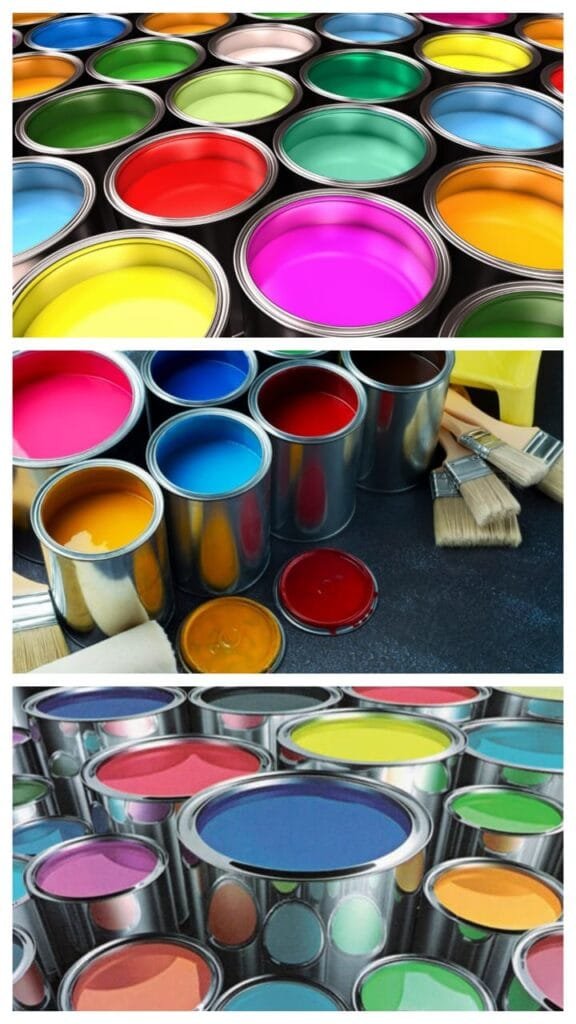Introduction to Eco-Friendly Paints
As the world grows increasingly conscious of environmental sustainability, the demand for eco-friendly products has surged across various sectors, including home decor. One significant aspect of creating a sustainable living space is the choice of paint. Eco-friendly paints, also known as green paints or low-VOC paints, are formulated with natural ingredients that minimize the impact on the environment and human health.
Traditional paints often contain volatile organic compounds (VOCs) and other harmful chemicals that emit toxic fumes during application and even long after the paint has dried. These substances can contribute to indoor air pollution, pose health risks such as respiratory problems and headaches, and negatively impact the environment through the release of greenhouse gases. Eco-friendly paints, on the other hand, are free from these harmful chemicals or contain very low levels of them, making them a safer and more responsible choice for your home.
One of the primary benefits of using eco-friendly paints is the improvement in indoor air quality. With reduced or zero VOC emissions, these paints help create a healthier living environment for you and your family. Additionally, eco-friendly paints often incorporate natural, renewable materials such as plant oils, clay, and milk proteins, which further reduce their environmental footprint.
Beyond health and environmental advantages, eco-friendly paints offer excellent aesthetic qualities. They come in a wide variety of colors and finishes, ensuring that you do not have to compromise on the visual appeal of your decor. They are also known for their durability and long-lasting performance, which means fewer repaints and less waste over time, further contributing to their sustainability.
Choosing eco-friendly paints is a step towards responsible living, enhancing both the beauty and safety of your home while advocating for a healthier planet. As we delve deeper into the world of sustainable home decor, the significance of such choices becomes increasingly apparent.

Types of Eco-Friendly Paints
When considering sustainable home decor, gr*e*ening your walls with eco-friendly paints is an excellent choice. Among the various options available, the most common types include low-VOC (volatile organic compounds) paints, zero-VOC paints, natural paints, and milk paints. Each of these paint types offers unique benefits and compositions suitable for different settings.
Low-VOC Paints: Low-VOC paints are designed to emit fewer volatile organic compounds compared to traditional paints. VOCs are chemicals that can cause air pollution and health issues. These paints typically contain fewer than 50 grams of VOCs per liter. They are a popular choice for indoor applications due to their improved air quality benefits, reducing the risk of respiratory problems. Ideal for living rooms, bedrooms, and any heavily used spaces, low-VOC paints provide a balance between performance and environmental impact.
Zero-VOC Paints: As the name suggests, zero-VOC paints contain virtually no volatile organic compounds, usually registering less than 5 grams of VOCs per liter. These paints are an excellent choice for individuals with heightened sensitivities or allergies, as they minimize potential health risks. Zero-VOC paints are especially beneficial for nurseries, hospitals, and areas where air purity is of utmost importance. They offer a safer alternative without compromising quality or color variety.
Natural Paints: Natural paints are formulated using naturally occurring ingredients such as clay, lime, casein (milk protein), essential oils, and plant dyes. They are completely biodegradable and non-toxic, making them an environmentally responsible choice. Natural paints are ideal for homes looking to reduce chemical exposure and enhance sustainability. They provide unique textures and earthy colors, suitable for rustic or nature-inspired interiors.
Milk Paints: Milk paints, one of the oldest types of paints, are crafted from milk protein (casein), lime, clay, and earth pigments. They are entirely natural, biodegradable, and offer a matte finish. Due to their simple composition, milk paints are perfect for furniture, wooden surfaces, and historical restorations. They require a bonding agent when applied on non-porous surfaces but reward with distinctive, charming aesthetics.

Benefits of Using Eco-Friendly Paints
Eco-friendly paints offer a myriad of advantages that make them a superior choice for home decor. One of the most significant benefits is the reduced exposure to harmful chemicals. Conventional paints often contain volatile organic compounds (VOCs), which can evaporate into the air and pose health risks such as respiratory problems, headaches, and dizziness. Eco-friendly paints, on the other hand, have little to no VOCs, making them safer for both residents and painters.
Moreover, the use of eco-friendly paints can lead to improved indoor air quality. These paints emit fewer toxins and chemicals into the air, contributing to a healthier living environment. This is especially important for households with children, elderly individuals, or those with respiratory conditions like asthma. Improved air quality can lead to better overall health and well-being for everyone in the home.
In addition to health benefits, eco-friendly paints are better for the environment. They often have a lower carbon footprint compared to traditional paints, as they are made from natural, renewable resources and are biodegradable. This translates to reduced environmental pollution during production, use, and disposal. By choosing eco-friendly paints, homeowners can contribute to a decrease in greenhouse gas emissions, thereby playing a part in mitigating climate change.
There are also long-term cost savings associated with using eco-friendly paints. While the initial purchase price may be slightly higher, these paints often offer greater durability and require less frequent reapplication. This means fewer repaints over time, leading to savings in both material and labor costs. Additionally, some eco-friendly paints have reflective properties that can help regulate indoor temperatures, potentially reducing energy consumption and utility bills.
Overall, the multiple health, environmental, and financial benefits make eco-friendly paints an excellent choice for anyone looking to create a sustainable and healthy living space.
Top Brands Offering Eco-Friendly Paints
In the realm of sustainable home decor, several leading brands have emerged as pioneers in offering eco-friendly paints. These brands not only focus on minimizing environmental impact but also ensure top-notch quality and customer satisfaction. Below are some of the most reputable brands in this niche:
ECOS Paints: This brand is renowned for its extensive range of non-toxic, zero-VOC (volatile organic compounds) paints. ECOS Paints offers a variety of colors, including custom shades, making it a versatile choice for homeowners. Their products are certified free from harmful chemicals by organizations such as Green Seal and the USDA. Customer reviews frequently highlight the paint’s excellent coverage and durability, making ECOS Paints a trustworthy option for environmentally-conscious consumers.
Benjamin Moore Natura: Benjamin Moore’s Natura line stands out due to its high performance and eco-friendly formulation. It boasts zero-VOCs and zero emissions, ensuring indoor air quality remains uncompromised. The Natura line has earned the Greenguard Gold Certification, attesting to its low chemical emissions. Customers often praise its smooth application, quick drying time, and wide range of vibrant colors, marking it as a favorite among those seeking sustainable solutions without sacrificing quality.
Behr Premium Plus: Behr’s Premium Plus line is another formidable option in the eco-friendly paint sector. It is GREENGUARD Gold certified, indicating very low chemical emissions, which is ideal for maintaining a healthy home environment. The paint is known for its excellent coverage and durability, and it comes with a range of finishes to suit various decor styles. Customers appreciate its affordability, ease of use, and the rich, enduring color it provides.
Farrow & Ball: This UK-based brand is celebrated for its luxury eco-friendly paints. Farrow & Ball uses natural ingredients, reduces waste in production, and supports sustainable practices with water-based formulations that ensure low VOC levels. Their rich, deep hues and unique, hand-mixed finishes receive widespread acclaim from customers. The brand’s commitment to sustainability is further endorsed by certifications like the EU Ecolabel, reinforcing their position as a leader in eco-friendly paint solutions.
Each of these brands demonstrates a strong commitment to environmental stewardship without compromising on performance and aesthetics. By choosing such reputable brands, consumers can confidently contribute to sustainable home decor while benefiting from high-quality, beautiful paint finishes.
How to Choose the Right Eco-Friendly Paint
When selecting eco-friendly paint for your home decor projects, several crucial factors should be considered to ensure you make a sustainable choice. Firstly, understanding labels and certifications is paramount. Look for certifications such as Green Seal or those that meet Environmental Protection Agency (EPA) standards. These endorsements indicate that the paint meets stringent environmental and health criteria, minimizing harmful emissions and pollutants.
Next, consider the specific room type and its usage. For high-traffic areas like kitchens and bathrooms, opt for eco-friendly paints that offer enhanced durability and resistance to moisture. These paints are formulated to withstand frequent cleaning and exposure to humidity without compromising air quality. Conversely, for bedrooms and living rooms, select paints with low or zero Volatile Organic Compounds (VOCs) to ensure a healthier living environment.
Examining the paint’s coverage is another critical aspect. Eco-friendly paints often provide excellent coverage, which means fewer coats are required, reducing the overall consumption of materials. Check the paint manufacturer’s recommendations regarding square footage coverage to determine the quantity of paint needed for your project efficiently.
Finally, durability is a key consideration. Eco-friendly paints have evolved significantly and now boast impressive durability that can rival conventional options. Ensure the paint is suitable for the intended surface, whether it is drywall, wood, or metal, to maximize longevity and performance. Durable eco-friendly paints not only sustain their finish for long periods but also contribute to less frequent repaints, further reducing environmental impact.
By taking these considerations into account, you can confidently choose the most appropriate eco-friendly paint for your projects, aligning your home decor choices with sustainable practices. The right selection not only enhances the aesthetic appeal of your space but also promotes a healthier and more eco-conscious lifestyle.

Application Tips for Eco-Friendly Paints
Applying eco-friendly paints requires careful attention to detail in order to achieve optimal results while maintaining a healthy, low-VOC environment. To start, surface preparation is crucial. Properly cleaned and primed surfaces allow for better paint adhesion and longevity. Begin by thoroughly cleaning the surface with a mild detergent. Any dirt, grime, or old paint flakes can hinder the performance of eco-friendly paint.
Once the surface is clean, repair any holes or imperfections using eco-friendly fillers. Sand the areas smoothly and ensure the surface is dry before priming. Choose a low-VOC primer compatible with your eco-friendly paint to create an even base. Priming is especially important on porous surfaces to ensure consistent coverage.
When it comes to tools and materials, opting for high-quality brushes and rollers can make a significant difference. Synthetic bristle brushes are recommended for water-based eco-friendly paints, while foam rollers provide smooth, even coverage. Additionally, consider using painting tools made from recycled or sustainable materials to further enhance your eco-conscious efforts.
To achieve optimal coverage, apply eco-friendly paints in thin, even coats. Start with a thin initial coat, allowing it to dry completely before applying subsequent layers. This method prevents over-application, reducing the risk of drips and ensuring a more professional finish. Maintain a steady hand and use long, continuous strokes for consistency.
During the painting process, it’s essential to keep the area well-ventilated to minimize exposure to VOCs. Open windows and use fans to facilitate air circulation. Wearing a mask can also help reduce inhalation of paint fumes. For eco-friendly paints, which generally have lower VOC levels, maintaining ventilation will further ensure a healthy living space.
In terms of finishing touches, allow sufficient drying time between coats. Follow the manufacturer’s instructions regarding drying and re-coating times. Once the final coat is applied, give the painted surface ample time to cure before using the space. Proper curing enhances the durability and longevity of eco-friendly paint, ensuring a beautiful, sustainable home decor.
Common Myths and Misconceptions
Eco-friendly paints often find themselves surrounded by an aura of myths and misconceptions. One prevalent belief is that these paints are significantly more expensive than their traditional counterparts. However, this perception does not always stand up to scrutiny. While it is true that some eco-friendly options may come at a premium, many brands have introduced competitive pricing. Moreover, the long-term health and environmental benefits often justify any additional upfront cost.
Another common myth is that eco-friendly paints lack the performance and durability offered by conventional paints. This could not be further from the truth. Modern advancements in eco-friendly paint technology have closed any performance gap, providing excellent coverage, adhesion, and longevity. For instance, many water-based eco-friendly paints now boast a resilience that rivals even the most robust traditional oil-based paints.
Aesthetic concerns also loom large in the realm of misconceptions. Some homeowners worry that opting for sustainable paints might limit their color and finish choices. This myth can be easily debunked. Renowned brands such as Benjamin Moore and Sherwin-Williams offer an extensive palette of eco-friendly paints, ensuring that sustainability does not come at the cost of creativity. Whether you’re looking for vibrant hues or subtle tones, eco-friendly paints provide an ample range to meet your design needs.
The final misconception worth addressing is availability. There is a lingering notion that eco-friendly paints are difficult to find and purchase. In reality, major hardware stores and online marketplaces have made these products readily accessible. The increasing consumer demand for sustainable home decor solutions has led to a more widespread distribution network, making it easier than ever for consumers to make eco-friendly choices.
Addressing these myths and misconceptions reveals that eco-friendly paints are not only a viable alternative to traditional options but often a superior one in multiple aspects. From affordability and durability to aesthetic versatility and availability, these paints offer myriad benefits without compromising on quality.
Future Trends in Eco-Friendly Paints
As the demand for sustainable home decor continues to rise, the eco-friendly paint industry is experiencing a surge of innovation and development. One of the most significant emerging trends is the advancement in paint technology. Nano-technology, for instance, is being explored to create paints that not only reduce environmental harm but also enhance the longevity and functional properties of walls. This technology aims to produce paints that can offer superior durability, resistance to mold, and even self-cleaning capabilities, reducing the frequency of repainting and further minimizing environmental impact.
Another promising trend is the exploration of new, sustainable materials for paint production. Researchers are increasingly focused on natural ingredients such as algae, soy, and even food waste, moving away from traditional petrochemical-based substances. Algae-based paints, for example, offer a renewable resource that can sequester carbon dioxide, thereby contributing to decreased greenhouse gas emissions. Soy-based paints are gaining attention for their lower volatile organic compounds (VOCs) content, making them a healthier choice for indoor environments.
Consumer preferences are also shaping the future of eco-friendly paints. As awareness about environmental issues grows, the market is seeing a shift towards more transparent practices. Consumers are prioritizing eco-certifications and labels that validate the sustainability claims of paint products. This has led to a rise in product lines that not only meet but exceed environmental standards, positioning themselves as leaders in sustainability. Additionally, there is an increasing preference for water-based paints over solvent-based options due to their lower environmental impact and reduced toxicity.
These trends in eco-friendly paints reflect broader societal movements towards sustainability and environmental responsibility. As the industry continues to innovate, the collaboration between scientists, manufacturers, and consumers will be key to driving forward the development of truly sustainable and high-performance paint solutions. By integrating advanced technologies and sustainable materials, the future of eco-friendly paints promises a harmonious blend of aesthetics, functionality, and environmental stewardship.

